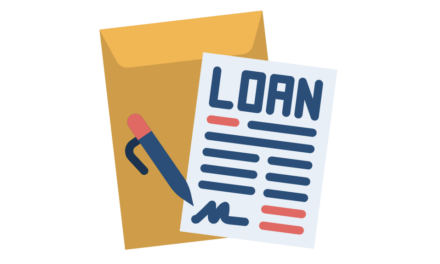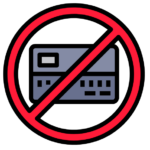In the ever-evolving business finance landscape, securing adequate funding is critical to sustaining growth and navigating challenges. One financing option often overlooked is the business line of credit (LOC). This financial tool can be a lifeline for businesses facing cash flow uncertainties, unexpected expenses, or opportunities requiring quick capital infusion. This article delves into what a business line of credit is, how it works, its benefits and drawbacks, different types, application processes, and more.
What Is a Business Line of Credit?
A business line of credit is a flexible financing option that allows businesses to access funds up to a specific limit, which they can draw upon as needed. Unlike traditional loans that provide a lump sum, a business LOC operates similarly to a credit card, enabling businesses to withdraw funds, repay them, and then borrow again within the credit limit.
How Does a Business Line of Credit Work?
The functionality of a business LOC can be broken down into two primary phases: the draw period and the repayment period.
- Draw Period: This phase typically lasts between six months to five years, depending on the lender’s terms. During this period, businesses can borrow against their approved credit limit. Interest accrues only on the amount drawn, not the entire credit limit. No interest is charged if no funds are borrowed, although there may be a maintenance fee to keep the credit line active.
- Repayment Period: Once the draw period concludes, businesses enter the repayment phase, during which they must start repaying the borrowed amount. Depending on the terms negotiated with the lender, repayments can be structured as either interest-only or include principal payments.
Advantages of a Business Line of Credit
Flexibility and Convenience
A significant advantage of a business LOC is its flexibility. Businesses can draw funds as needed, making it ideal for managing cash flow fluctuations, purchasing inventory, or covering unexpected expenses.
Interest on Utilized Amount Only
Interest is charged only on the amount drawn, making a business LOC potentially more cost-effective than traditional loans or credit cards, where interest may apply to the total amount.
Quick Access to Funds
Once established, a business line of credit allows for quick access to funds, often with minimal paperwork. This speed can be crucial in seizing business opportunities or addressing urgent financial needs.
Improves Creditworthiness
Regularly utilizing and responsibly repaying a business LOC can help improve a business’s credit profile, making it easier to secure financing in the future.
Disadvantages of a Business Line of Credit
Higher Interest Rates
While interest rates on business LOCs are generally lower than those of credit cards, they can still be higher than traditional term loans, particularly for businesses with less established credit histories.
Fees and Costs
Business lines of credit often come with various fees, including:
- Origination Fees: Charged at the initiation of the credit line, usually ranging from 0% to 2% of the credit limit.
- Maintenance Fees: Ongoing fees that may be charged monthly or annually.
- Late Payment Fees: Penalties for missed payments, typically around 5%.
- Inactivity Fees: Charged if the credit line remains unused for a specified period.
Risk of Overutilization
Easy access to funds can lead to overborrowing, which results in high interest payments and potentially jeopardizes the business’s financial health.
Types of Business Lines of Credit
1. Secured Business Line of Credit
Secured LOCs require collateral, such as real estate, equipment, or inventory. While this may lower interest rates and improve approval odds, it poses a risk to the borrower’s assets.
2. Unsecured Business Line of Credit
Unsecured LOCs do not require collateral but may have higher interest rates and stricter credit score requirements. Lenders may ask for a personal guarantee, which could put personal assets at risk.
3. Revolving Business Line of Credit
A revolving LOC allows businesses to borrow, repay, and borrow again within the established credit limit. This continuous access to funds makes it an attractive option for ongoing operational needs.
4. Non-Revolving Business Line of Credit
In contrast, a non-revolving LOC provides a fixed amount that can be drawn only once. After utilization, the line is closed, making it suitable for specific, one-time expenses.
How Is a Business Line of Credit Different from Other Financing Options?
Business Line of Credit vs. Term Loans
The main difference between a business LOC and a term loan is the funding structure. A term loan provides a lump sum with a fixed repayment schedule, which is ideal for planned, significant expenses such as equipment purchases. Conversely, a business LOC offers more flexibility for short-term needs and emergencies.
Business Line of Credit vs. Business Credit Cards
While both options provide access to funds, business credit cards usually have lower limits and are designed for everyday expenses. Credit cards may offer rewards programs but often have higher interest rates than business LOCs. Additionally, LOCs typically allow for larger withdrawals, making them suitable for substantial business expenditures.
Requirements for a Business Line of Credit
The requirements for obtaining a business line of credit can vary by lender, but key factors often include:
- Credit Score: A minimum score of around 660 is expected, though a higher score can lead to better terms.
- Collateral: For secured LOCs, lenders require collateral that can be claimed in case of default.
- Time in Business: Established businesses with a track record of at least one to two years are preferred, though some online lenders may accept startups with only six months of operation.
- Annual Revenue: Consistent revenue is critical; lenders may require a minimum annual income ranging from $10,000 to $250,000.
- Personal Guarantee: Many lenders will ask for a personal guarantee from business owners, particularly for unsecured LOCs.
Applying for a Business Line of Credit
Step 1: Assess Your Financial Needs
Before applying, determine how much credit you need and how you plan to use it. Consider requesting a higher limit to accommodate potential future needs.
Step 2: Research Lenders
Compare traditional banks, credit unions, and online lenders. Look at interest rates, fees, credit limits, and terms to find the best fit for your business.
Step 3: Gather Required Documentation
Prepare necessary documents, including tax returns, financial statements, business licenses, and other relevant information to support your application.
Step 4: Submit Your Application
Complete and submit your application, either online or in person. The lender may request additional documentation for verification.
Step 5: Review Terms and Conditions
Once approved, carefully review the terms of your LOC, including interest rates, fees, and repayment terms, before signing the agreement.
Conclusion
A business line of credit can be a valuable financial tool for businesses seeking flexibility in managing cash flow and unexpected expenses. Understanding how a LOC works, its benefits and drawbacks, and the types available can help business owners make informed decisions. By thoroughly researching lenders and preparing for the application process, businesses can secure the financing they need to thrive in an unpredictable economic landscape.










